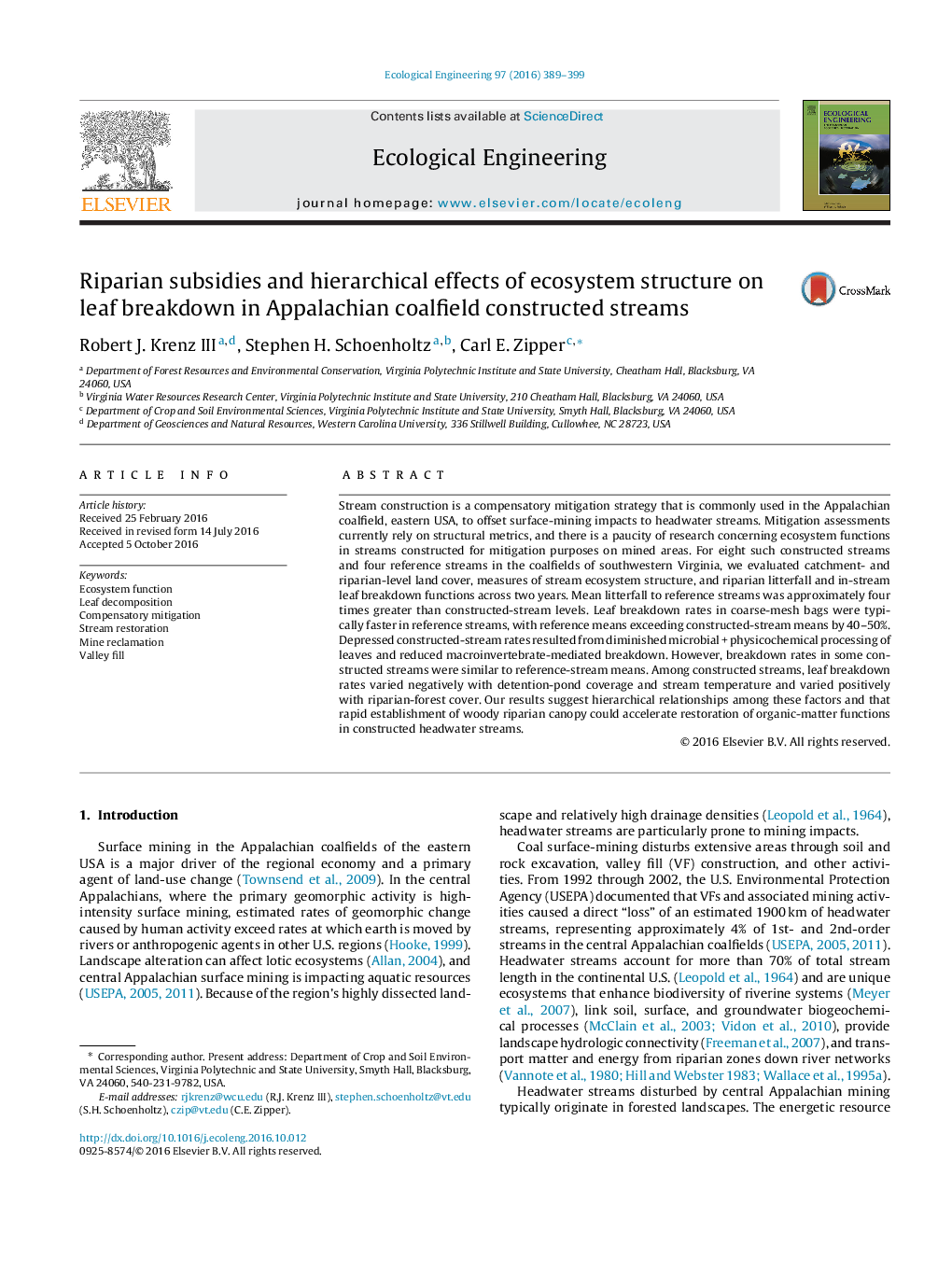| Article ID | Journal | Published Year | Pages | File Type |
|---|---|---|---|---|
| 4388399 | Ecological Engineering | 2016 | 11 Pages |
•Relative to reference streams, constructed-stream litterfall was depressed.•Leaf breakdown was slower in most constructed streams, but not universally.•Macroinvertebrate-mediated and microbial + physicochemical processing was inhibited.•Temperature appeared to exert strongest overriding control on leaf breakdown.•Riparian plantings can moderate stream temperatures and provide organic matter.
Stream construction is a compensatory mitigation strategy that is commonly used in the Appalachian coalfield, eastern USA, to offset surface-mining impacts to headwater streams. Mitigation assessments currently rely on structural metrics, and there is a paucity of research concerning ecosystem functions in streams constructed for mitigation purposes on mined areas. For eight such constructed streams and four reference streams in the coalfields of southwestern Virginia, we evaluated catchment- and riparian-level land cover, measures of stream ecosystem structure, and riparian litterfall and in-stream leaf breakdown functions across two years. Mean litterfall to reference streams was approximately four times greater than constructed-stream levels. Leaf breakdown rates in coarse-mesh bags were typically faster in reference streams, with reference means exceeding constructed-stream means by 40–50%. Depressed constructed-stream rates resulted from diminished microbial + physicochemical processing of leaves and reduced macroinvertebrate-mediated breakdown. However, breakdown rates in some constructed streams were similar to reference-stream means. Among constructed streams, leaf breakdown rates varied negatively with detention-pond coverage and stream temperature and varied positively with riparian-forest cover. Our results suggest hierarchical relationships among these factors and that rapid establishment of woody riparian canopy could accelerate restoration of organic-matter functions in constructed headwater streams.
